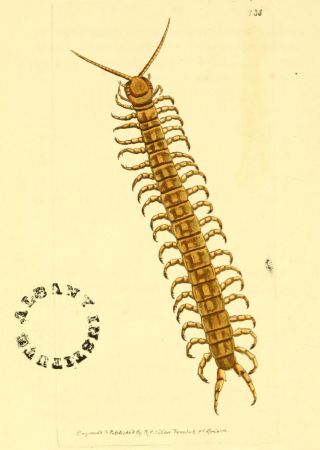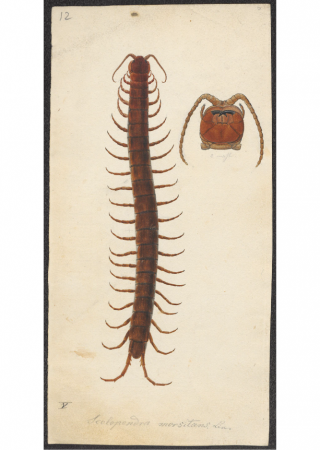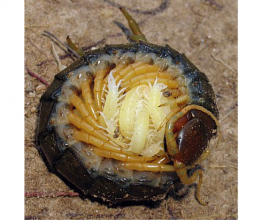Giant centipede
...the genus Scolopendra, containing primarily large tropical centipedes today encompasses up to 90 species?
...the largest species is Scolopendra gigantea, reaching a length of up 30cm, living in Jamaica, Trinidad and equatorial South America?
...scolopendras are often kept as house pets in terrariums?
...there is a recorded instance of a person who accidentally drank a scolopendra and it bit his esophagus from the inside? The person died of an infection of the mucous membranes.
...large species of scolopendra are capable of hunting lizards, frogs, mice, birds and bats?
...scolopendras, like other centipedes, kill with the aid of venom, delivered by a special pair of modified first appendages?
Basic information:
Phylum - arthropods (Arthropoda)
Class - centipede (Chilopoda)
Maximum length - 30 cm
Food - invertebrates, small vertebrates
Distribution - tropical and subtropical areas all over the world
Type of poison – complex mix of various organic chemicals
Distinguishing marks:
Large centipedes, with body divided into head and segmented trunk. Color is variable, but generally yellow to brown. The head may be colored differently from the rest of the body. Each body segment carries one pair of legs.
Centipedes are predatory arthropods, possessing a specialized pair of first appendages (forcipules) tipped with venom-injecting claws, immediately behind the mouthparts. Large members of the Scolopendra genus may even be dangerous to humans. However, humans are rarely bitten, because of the centipedes' generally secretive lifestyle. The bite is intensely painful, accompanied by substantial local swelling. Other symptoms include fever and nausea. There are even a few fatal cases attributed to scolopendras, but these are the result of unusually unfortunate circumstances, such as a bite to the esophagus.




